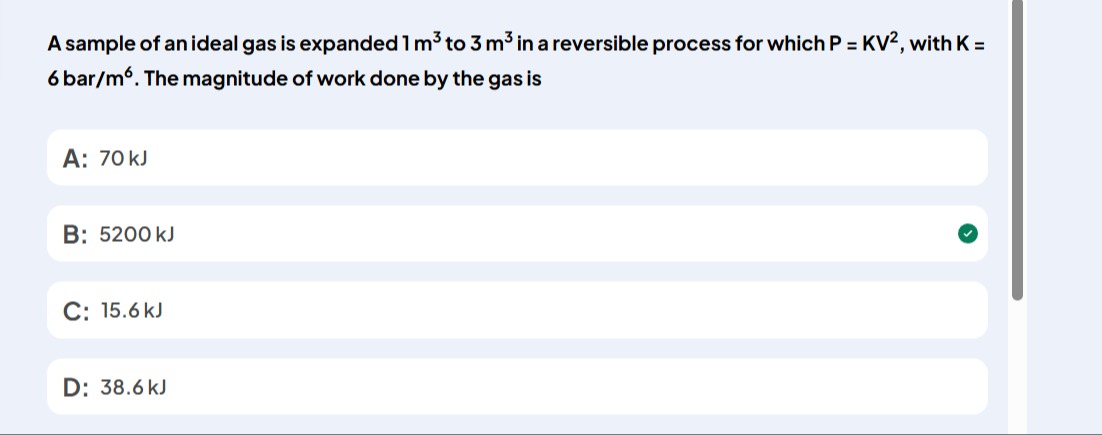Question
Question: A sample of an ideal gas is expanded 1 m³ to 3 m³ in a reversible process for which P = KV², with K ...
A sample of an ideal gas is expanded 1 m³ to 3 m³ in a reversible process for which P = KV², with K = 6 bar/m⁶. The magnitude of work done by the gas is

70 kJ
5200 kJ
15.6 kJ
38.6 kJ
5200 kJ
Solution
The work done by a gas in a reversible process is given by the integral: W=−∫V1V2PdV
The process is defined by the relation P=KV2, where K=6bar/m6. The initial volume is V1=1m3 and the final volume is V2=3m3.
Substitute the expression for P into the work integral: W=−∫V1V2(KV2)dV
Since K is a constant, it can be taken out of the integral: W=−K∫V1V2V2dV
Now, perform the integration: W=−K[3V3]V1V2
Substitute the limits of integration: W=−K(3V23−3V13) W=−3K(V23−V13)
Now, substitute the given values: K=6bar/m6 V1=1m3 V2=3m3
W=−36bar/m6((3m3)3−(1m3)3) W=−2bar/m6(27m6−1m6) W=−2bar/m6(26m6)
Multiplying the numerical values and units: W=−(2×26)(m6bar×m6) W=−52bar⋅m3
To express the work done in Joules, we use the conversion factor: 1 bar = 105 Pa 1 m³ = 1m3 Therefore, 1 bar⋅m³ = 105 Pa⋅m³ = 105 J.
Convert the work done to Joules: W=−52×105J W=−5,200,000J
To express the work done in kilojoules (kJ), divide by 1000: W=−5200kJ
This is the work done on the gas. The question asks for the magnitude of the work done by the gas. Work done by the gas = −W. Work done by the gas = −(−5200kJ)=5200kJ.
The magnitude of the work done by the gas is 5200 kJ.
